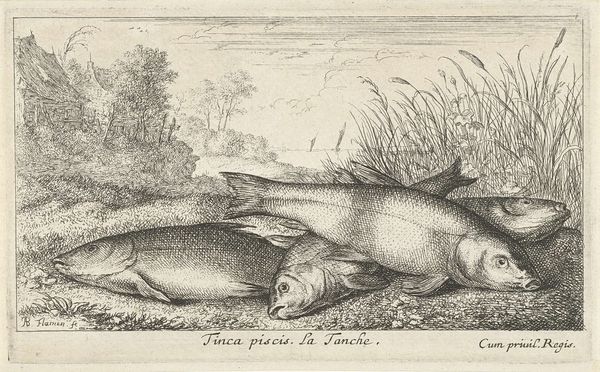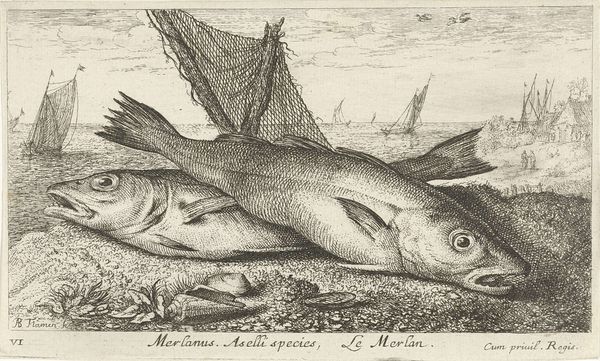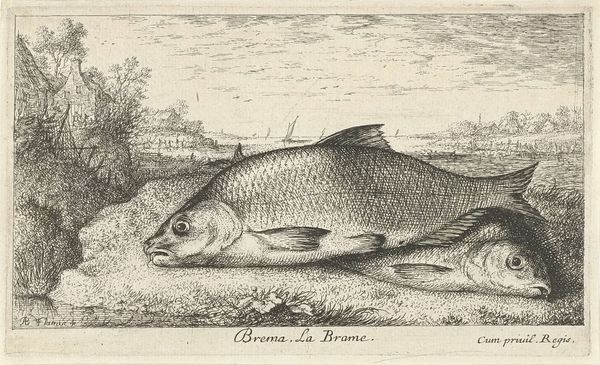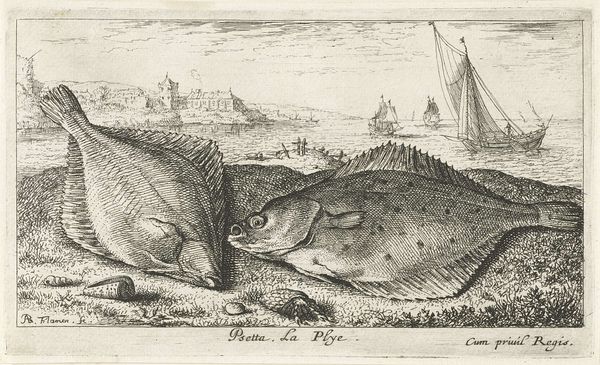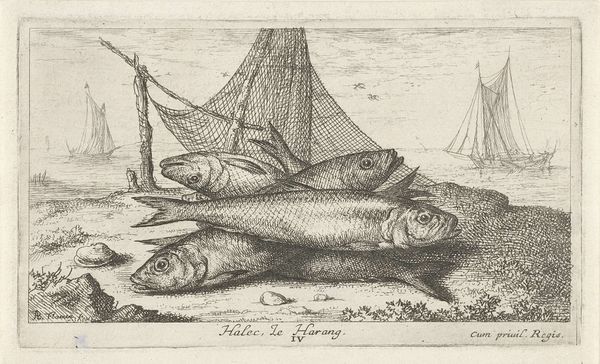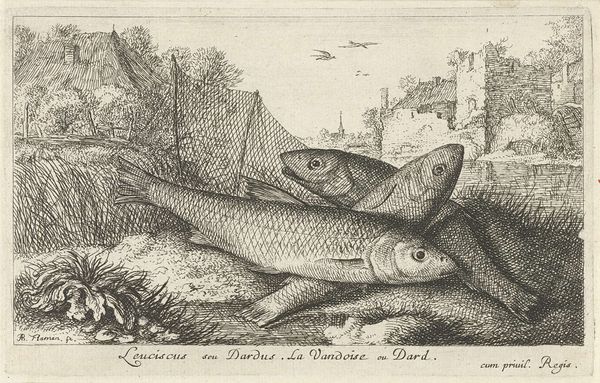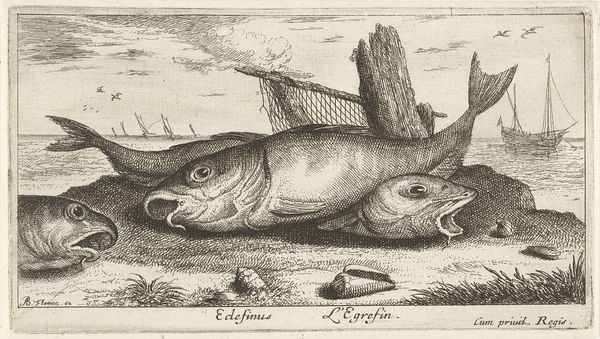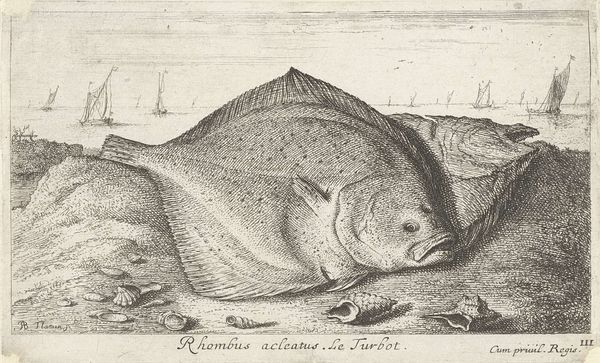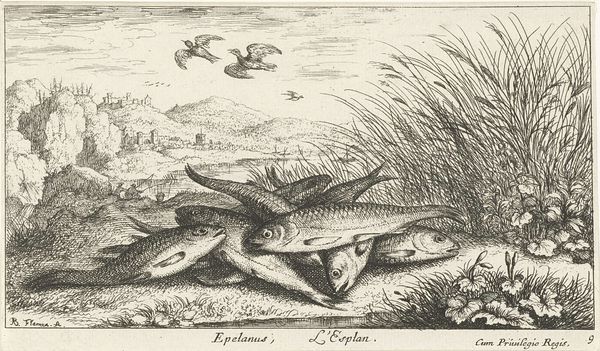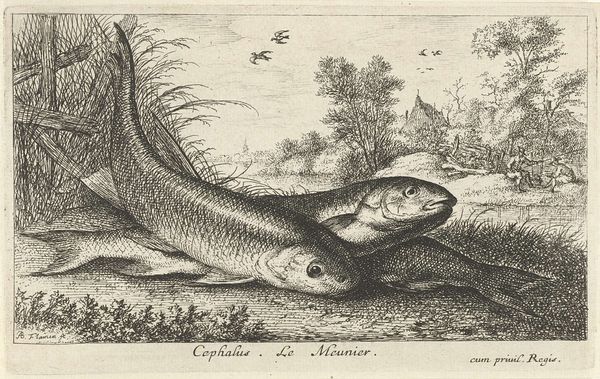
print, etching
#
baroque
#
dutch-golden-age
# print
#
etching
#
realism
Dimensions: height 107 mm, width 177 mm
Copyright: Rijks Museum: Open Domain
Curator: This is Albert Flamen’s "Twee kabeljouwen op het strand", or "Two Cod on the Beach," an etching dating back to 1664, during the Dutch Golden Age. Editor: My initial reaction is…grimly fascinating. There's a stark realism to these fish, especially the one with its mouth agape. It's almost unsettling. Curator: Yes, unsettling yet instructive. Consider the burgeoning Dutch maritime power in the 17th century. The fishing industry was crucial, cod specifically being a vital commodity. Flamen's choice of etching, a readily reproducible printmaking technique, democratized access to this imagery. How were such resources and products depicted and circulated to contribute to social perceptions and marketing, then? Editor: Absolutely, this print served a socio-economic purpose. The detailed rendering of the cod emphasizes its worth. Note also the serene coastal backdrop; it connects the fish directly to their source and subtly celebrates Dutch naval capabilities—securing trade routes to ensure the delivery of said commodity. Curator: Precisely. The very materiality of the etching contributes to this narrative. The lines are precise, economical, created for efficient production. Unlike paintings intended for elite patronage, this etching finds its audience among a broader segment of society engaged in trade and consumption. The social standing of food and how that was changing and expanding, then and now. Editor: It speaks volumes about the politics of imagery. Who decided these fish were worthy of artistic representation? Whose story are we *not* seeing? It's also hard to ignore that Latin phrase below the image: "Molucuis piscis…cum privil. Regis." It indicates official royal privilege – suggesting this imagery served a purpose aligned with state interests. This simple still life has many economic and cultural layers when investigated. Curator: Indeed, by scrutinizing Flamen's choices—the medium, subject matter, distribution—we begin to grasp the profound link between art, material culture, and social power during the Dutch Golden Age. How does labor translate from ocean to table to image? How has our contemporary view of these products been manipulated by social ideas and norms? Editor: Exactly. By unpacking the image's history, materials and the mechanisms of its reproduction, we gain a much richer understanding, not only of the artwork itself, but also of the world that birthed it. It offers much food for thought beyond these deceased cod.
Comments
No comments
Be the first to comment and join the conversation on the ultimate creative platform.
